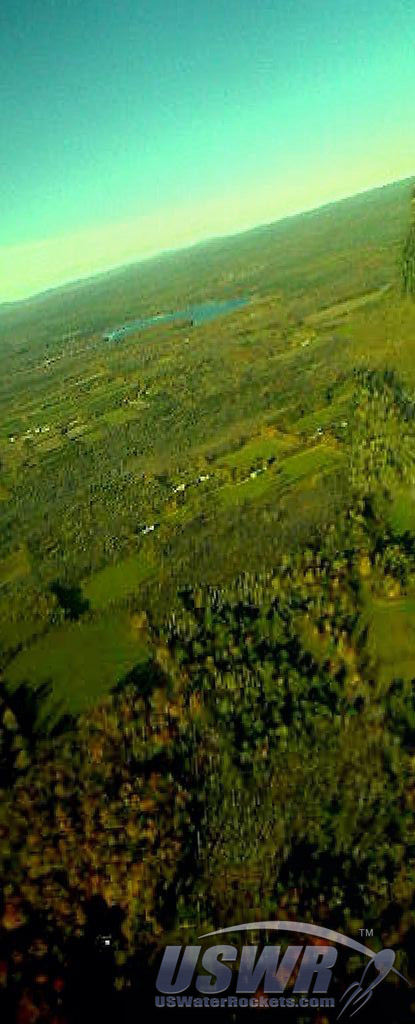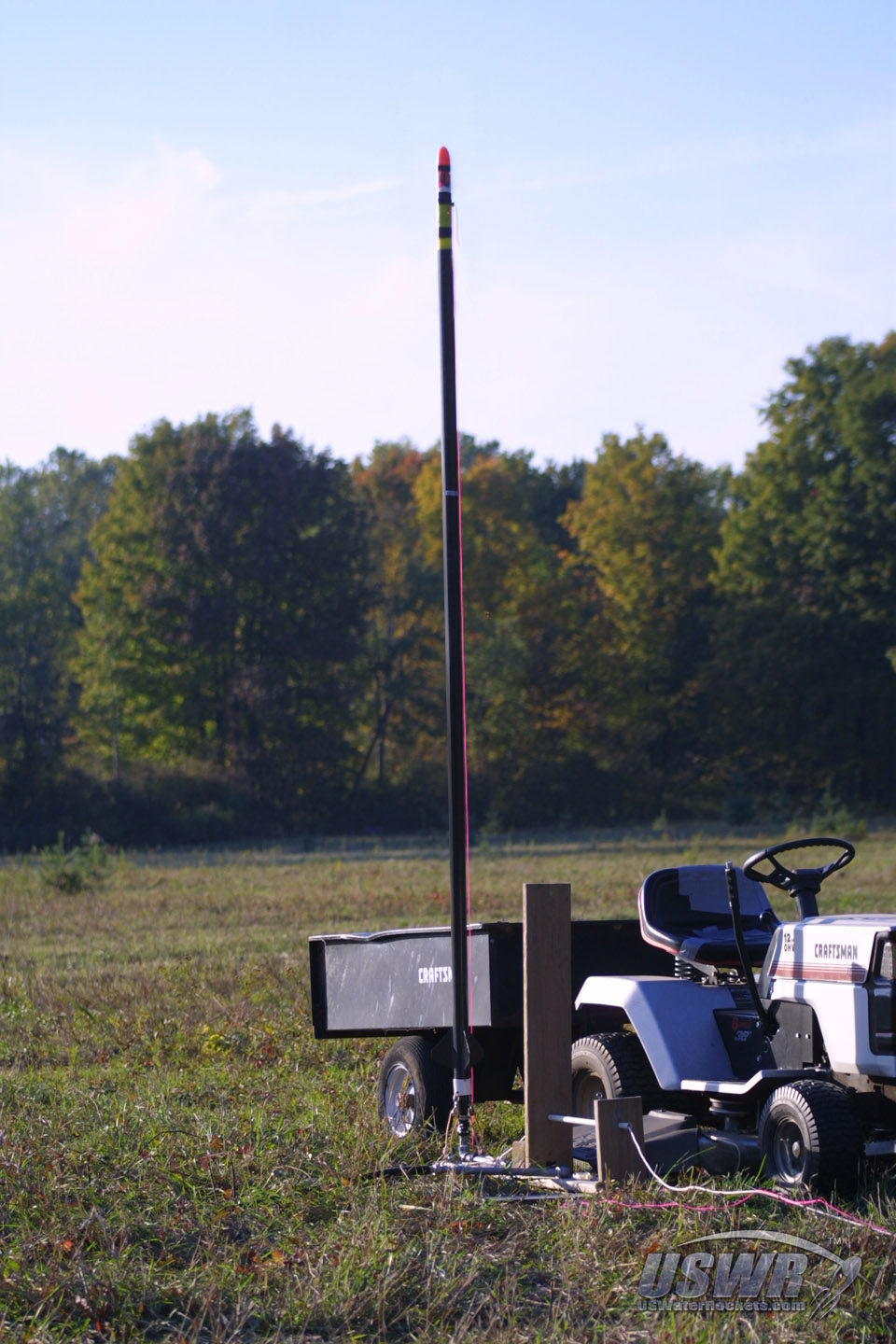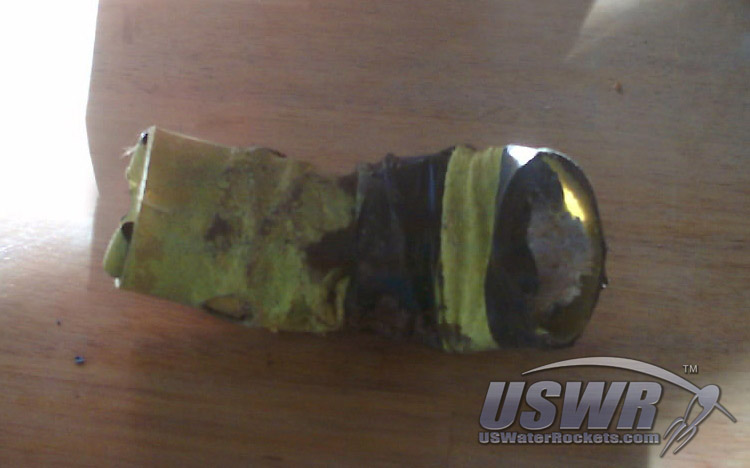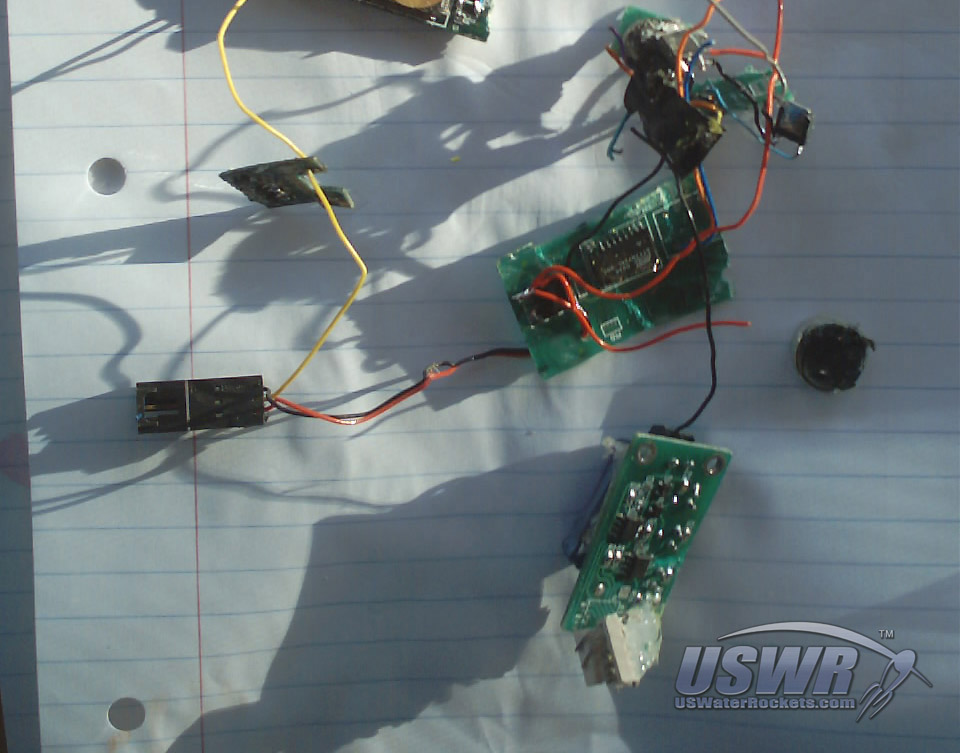X-12 Water Rocket destroyed in fall from 1,819 feet (554 meters) while attempting to set new World Record.

U.S. Water Rockets recently revealed that their World Record holding X-12 Water Rocket was completely destroyed in a crash while attempting to set a higher Water Rocket World Record in the late afternoon on October 29, 2005.
The day was very bright and sunny and there was a moderate wind, but conditions looked favorable for a record attempt, and the lighting conditions were very favorable to taking aerial movies of the record flights, so X-12 was prepared for launching. A short time later, the X-12 rocket was on the launching platform and holding the highest pressure ever, in anticipation of the record flight.
First, the telemetry was activated and the camera began filming. After a brief countdown, the release mechanism was triggered and X-12 streaked skyward at speeds approaching 300MPH. Once X-12 receded from view by the naked eye, attention was turned to the telemetry receiver. Everything looked normal until shortly after apogee when it was apparent that something had gone seriously wrong. X-12 was descending at an alarming rate and accelerating. The alarm was sounded and the U.S. Water Rockets took shelter. Within seconds, the sound of rushing air was heard and increased in volume and pitch until a loud crack was heard a few yards from the launch platform. There, X-12 was spotted protruding from the soil.
The area around X-12 was excavated, and the remains of the payload section, including the altimeter, telemetry, flight controller, and video camera were carefully exhumed from the hole. Close inspection revealed that the X-12 pressure vessel was badly cracked and the payload compartment was crushed to half of its normal length by the impact, which struck a large stone 6" below the surface.
X-12 was carried back to the U.S. Water Rockets workshop, where the payload section was disassembled, revealing that the electronic circuit boards within were crushed and broken into small pieces.
The telemetry indicated that the flight had gone higher than any Water Rocket in history, but the failure of the parachute deploy system relegated the flight to an obscure footnote in the history of Water Rocketry for failing to comply with the strict safety rules created by the WRA2. The chief violation of the WRA2 Single Stage Water Rocket World Record Rules, was the speed at which the rocket landed far exceeded the safety limits set forth in the rules. A second infraction was that the X-12 Rocket was destroyed, preventing a second flight from taking place that day to corroborate the data of the first flight and validate the record. The last infraction was the loss of the onboard camera prevented the video footage from being used to substantiate the flight.
Discouraged by the loss, the U.S. Water Rockets Team decided there was nothing they could do about the record now, as there was no way to correct for the first two infractions, but there could possibly be something to be done about the third.
It was discovered while examining the wreckage of the electronics payload that the Flash-Type Memory installed in the onboard camera was still connected to a fragment of the printed circuit board it was soldered to, and it appeared to be intact. A few of the leads on the package were sheared off on one corner, but the Manufacturer Datasheet for the Memory revealed that these pins were not used when reading the data from the device.
A hand-made circuit board was constructed to interface to the memory devices, which were then carefully removed from the remains of the camera and soldered in place on an adapter board. Some custom software was designed to read the data file from the Flash Memory Integrated Circuits, and upload this data to a PC. The software was executed, and soon the contents of the memory were safely saved on computer disk. But inspection of the data revealed a proprietary file format was used and the video from the flight was not stored in a simple fashion. After doing some research on Flash file systems, it was obvious to the engineers at U.S. Water Rockets that the data from the flash was stored in a slightly modified version of the SmartMedia Card File Format specification. With this information, the video file was then assembled from the data read from the Flash. However, the video file was incomplete, having been abruptly cut off when the camera struck the ground, and some important information was missing, as this is normally written to the file when filming is complete. Further analysis of the data revealed that the file was encoded using a Motion JPEG codec, which is well documented. A known good video was created with a spare camera and this was used as a surrogate for the missing sections of the crashed video. When the known good information was appended to the extracted video file, the video was successfully able to play, and never before seen views were revealed.
Tackling this technical challenge has inspired the U.S. Water Rockets Team to build an improved version of X-12, which is well under construction. Using the flight telemetry recorded in this crashed flight, the team knows that X-12 was not nearly tapping its full potential when it last flew. The successor to X-12 will easily reproduce and surpass this altitude.
Flight Video:













